computerchemist is ending the year on a high note with a brand new 100% synth-only album cutting a groove with his unique take on the neo-berlin school sound.
label: Terrainflight TF019
release date: 2nd December, 2022
track listing:
- moonfloating 18:46
- LC’s theme 03:39
- paranoise 10:39
- sankt nikolaus auf der autobahn 10:14
- where the clouds touch the sky 21:10
keyboards, sequencer & drum programming: dave pearson
artwork: angiewoman / stable diffusion AI
all composing, mixing and mastering in the digital domain at terrainflight hungary
between jul 2022 and nov 2022
written & produced ©℗ 2022 by dave pearson
track 4: “liikenne transport” by YleArkisto, used under CC BY 4.0 / stereo image and envelope manipulated
thanks: my wife and family, and everybody else who has helped to encourage and support my music over the years
contact:
terrainflight: info@terrainflight.com
dave: www.computerchemist.com
Reviews
Jerry Kranitz
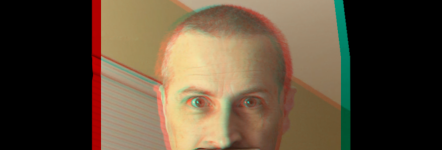
Moonfloating was the soundtrack to the start of my work day. It was great being serenaded by those luscious Berlin school/symphonic vibes. It’s a freakin’ nutty work day so I’m giving Dave channeling Klaus a second spin. Turns out its a damn good med for tension.
Paranoise took me pleasantly by surprise. I like the intense doomy feel. I gotta hand it to you Dave, you really mix the influences on this one. I’m definitely getting the Sabbath and Abacab over a Berlin school foundation. Very cool!
And the beginning of the title track When The Clouds Touch The Sky sounds like an 80s space-pop tune. Great melodies!
— Jerry Kranitz, 1 December 2022
Stephan Schelle, musikzirkus-magazin (EN)
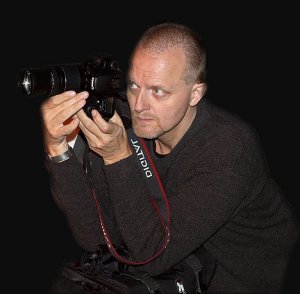
Multi-instrumentalist, musician and composer Dave Pearson is behind the name Computerchemist. From humble beginnings playing keyboards in rock bands in the mid ’80s with longtime friend and guitarist Mark Gemini Thwaite (Mission UK, Peter Murphy), Dave Pearson has quickly carved a niche for himself on the electronic music scene. But with many crossover influences of rock, classical and jazz that have influenced him, this gives his music a more dynamic and fresh sound.
For his twelfth solo album, “Where the Clouds Touch the Sky”, the computer chemist has gone back to his pure synthesizer roots and produced 5 new tracks with running times from 3:39 to 21:10 minutes playing time, which reflect the strong 70s influences paying homage to the influences of Krautrock and the Berlin School, such as Tangerine Dream, Klaus Schulze and Ash Ra Tempel. The album was self-released on Computerchemist’s private label Terrainflight on December 4, 2022.
The album begins with the 18:46 minute “moonfloating”. In keeping with the title, it starts off quite spacy with shimmering synth sounds that move through flat synthesizer clouds. You quickly hear sounds that remind you of Klaus Schulze or Manuel Göttsching aka Ashra. Dave slowly builds the piece up by layering more sounds and incorporating variations. He also added a programmed drum rhythm (strongly reminiscent of Harold van der Heijden’s style) in some places, which pushes the music in the direction of the “Eindhoven School” of the Ron Boots & Co. brand. This opener is the blueprint for the album, because it’s very much in the direction of the “Berlin School”.
At 3:39 minutes, “LC’s Theme” is the shortest track on the album. This is where electropop suddenly appears. Dave has recorded a wonderful, catchy melody that has pop appeal and thus takes on the style of British electronic musicians a bit.
Then it continues with the next 10:39 minute long track “paranoise”. A bit of krautrock comes up here, because a bass line, tripping synths and drums ensure rocking moments. This seems quite heavy in some passages, but is brightened up by the synths and is really well done. The track picks up speed, albeit slowly, and builds up to a part with a very nice synth solo.
With the 10:14-minute title “Saint Nicholas on the autobahn” Dave Pearson then also proves his sense of humour. How do you come up with a name like that? Well, it begins with synths and sleigh bells, which are inserted again and again. Some of it has something of the “Düsseldorfer Schule” about it, although here Kraftwerk (should that be a hint with the Autobahn in the title?) don’t really come into play. The track has little in common with well-known acts and after a few minutes also has krautrock in its luggage again, although the focus here is on electronic music.
The conclusion then forms the 21:10 minute title track. This begins again with a very catchy melody with pop appeal. After three minutes, however, the picture changes and Dave switches to gloomy, almost soundtrack-like sounds. After a little over five minutes, the picture brightens up again and music reminiscent of Jean Michel Jarre’s best days can be heard. After the eleven minute mark, this rhythmic part changes into a melancholic piano part, which then changes back into a very melodic/rhythmic part after 14 minutes and returns to a darker sound after 17 minutes, in which some piano dabs are now added. That shows how varied this title track is.
The new album “Where The Clouds Touch The Sky” by Computerchemist aka Dave Pearson offers very varied electronic music. So there are pieces in the style of the “Berlin School” and the “Eindhoven School” as well as tracks located in Krautrock on the album. Dave Pearson aka Computerchemist took up the stylistics here and transferred them to his own musical cosmos.
Stephan Schelle, musikzirkus-magazin, December 2022
Michael Shipway – Sequences Podcast

This new release from computerchemist eschews any guitar, prog or collaborations and is a truly solo album using only synthesisers. The results are both stunning and relaxing as it merges several influences to create something unique in itself. The opening track “moonfloating” contains all the elements of great Berlin School, from the interlocked sequences and huge synthesiser chords to electronic drums, reminiscent of latter- day releases in the genre. As the track progresses, the addition of Mellotron style Strings and Choirs really take things to a higher level, only to be broken down in time to reach a relaxed conclusion. All in all, a great track to open the album. “LC’s Theme” and “St Nikolaus” are more in the direction of a ‘French School’ than Berlin, being very rhythmic with drums and sequences, but this time with a strong melodic content in the lead-lines. This makes a great contrast to the Berlin School style and adds to the variation in style that is available on this album.
However, top marks for variation in style must go to the track “paranoise”. Although it is a purely electronic track, with Berlin School style sequences, there is a bass sequence that can only be described as ‘Sabbathesque’. Something I have never heard before, this track is truly doom-laden and requires several listenings to be fully appreciated.
The closing track, clocking-in at over 21 minutes, is a tour-de-force covering all the styles in the album, with ‘movements’ in the style of Berlin School, French School and ambient. Although a long track, the different sections lead to a time warp as it appears to finish a long time before it should!
Overall, this is an album that should appeal to many listeners in many styles, all within the Electronic Music genre… and beyond.
— Mike Shipway, Sequences Podcast, 4 December 2022
Uwe Brameier (Der Brammi), KlangARTen
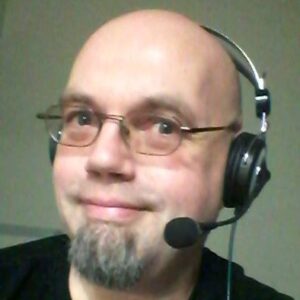
Thanks for your new album “where the clouds touch the sky”, I’ve already previewed it on the netradio show KlangARTen-Live last Thursday night. This album can really be called “going back to your musical roots”. After the last two excursions in the direction of prog rock and jazz, here you find an almost pure EM album, where you can stay again undisturbed “in the playground of the Berlin school”. Much sounds familiar, but not boring. One track can definitely be called an outlier however, which with 3:39 at the same time also the shortest of the 5 tracks. It’s called “LC’s Theme”, it seems more like a synth-pop caricature, which can be located somewhere between “The Great Commendment” by Camouflage as well as “It’s My Life” and “Such A Shame” by TalkTalk. If you like this kind of thing too, here you go…
To sum up, the album is rock solid and does not get boring even after repeated listening.
— Uwe Brameier, KlangARTen, Dec 4 2022
Paul Baker – Soundscapes
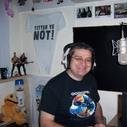
Where to start? With this the latest album from the wonderful Computerchemist (Dave Pearson), Where The Clouds Touch The Sky?
Well, the beginning maybe the logical place, but I think attention must be drawn to the amazing title track, twenty minutes plus of changes in style, mood, texture and drama, that weaves an ever changing musical path through, at least to my ears, threatening thunder, gentle rolling, fluffy white, wispy summer clouds and onwards up into the sky.
This album is different to the last couple that Computerchemist has released, no vocals, all synths and keys and all the other wonderful gadgets that make these delightful sounds. There is a smattering of guitar, or is it? And some of the drums sound rather ‘real’, but dear listener you need to listen for yourself and make your own mind up.
The music itself, well that is still pure Computerchemist. Leading you on the aforementioned journey, with influences pleasing to the ear, but never losing that Computerchemist ‘feel’. Dramatic, classic, quirky, yes, it is all here.
Fans of Vangelis, Tangerine Dream, Kraftwerk should give this album a listen. It is intriguing, original melodic, powerful and in short, simply marvellous.
— Paul Baker, Soundscapes, Dec 28 2022
José Luis Martinez Arilla – Descubre LA CAJA DE PANDORA (EN)
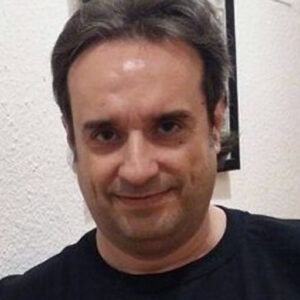
In his desire to advance musically and innovate melodic and structural approaches, the new work by Dave Pearson, aka Computerchemist, gives a new twist to his most immediate proposal and, with extreme quality and warmth, takes back the reins of his Berlin style, this time heavily seasoned with progressive elements and renditions to top keyboardists in the genre.
Let no one get me wrong and consider that Computerchemist has become a progressive group, the shots are not going there. Dave has combined the best of the planning and sequenced Berlin School, Tangerine Dream diving into the eighties, of course, in my ears; the melody of French electronica by Jean Michel Jarre (“Where the clouds touch the sky”) or avant-garde German electronica with subtle Kraftwerk brushstrokes. But the plan is consummated with the fluid style reminiscent of Tony Banks (Abacab era) and the Emersonian fanfare, especially in “Sankt Nikolaus auf der autobahn” (what a suggestive title), helping, and in what way, to shape an intelligent music exercise for the heart and mind. In his own way, Computerchemist even plays in his compositions with darker elements that at some point remind us of “Paranoise” to Black Sabbath or those darker and deeper Goblins.
All this with the inspired use of Minilogue sequencers and analogues, not to mention the programmed percussion that enhances the magic of a revived music based on the parameters of the seventies: imagination, development, tension and sound drama, warm and elaborate routes, as well as extensive flights that originate sound poems, sometimes fantastic and epic moments of monumental aromas.
A pleasant and appetizing work, one of the best published by the British-Hungarian synthesist, which gives free rein to his two confessed musical devotions: the Berlin school and progressive rock. The result is a heartfelt exercise in exceptional music that brings to life a canvas of sounds that captivate the listener, helping them on that fantastic journey to the deepest soundtrack of the cosmos.
— José Luis Martinez Arilla, Descubre LA CAJA DE PANDORA, 20 December 2022 (English translation by google – any corrections are welcome!)
Juergen Meurer, betreutesproggen.de (EN)

The “computer chemist” is already established on these pages and has certainly long since arrived in the EM scene. The Englishman, who lives in Hungary, has already been able to appeal to fans with a special affinity with the Berlin School with a number of works, but in recent years he has taken a different approach, including seeing and hearing in the collaboration with “RadioRay”. Now he’s back with an album that once again presents the classic Berlin School sound. So again a purely instrumental album, which he recorded completely on his own, only on the keyboard instruments, guitars were not used this time. The use of sequencers and drum programming is typical for the genre and is presented here in very good coordination with the melody lines.
Right at the start, fans of the Berlin School will feel right at home on the almost 19-minute ‘Moonfloating’, because it offers exactly what genre fans like about this orientation of electronic music. Cleverly used sequences, melodic synth lines, atmospheric mellotron parts – all mixed together in a way that leaves no room for boredom. The short (3:39) ‘LC’s Theme’ is a bit out of the ordinary, as it touches more on the synth-pop area. But soon we continue with a great track, namely the more than ten-minute long ‘Paranoise’. A bass synthesizer dominates here, giving the piece its own touch. Somehow, maybe it’s no coincidence that the title of the piece is reminiscent of the Black Sabbath classic.
Another highlight follows in the form of the next ten-minute film, which is amusingly titled ‘Saint Nicholas on the Autobahn’. Here, too, fine Mellotron sounds are inserted again, and memories of Tangerine Dream are sometimes awakened. And the final long track, the 21-minute title track, proves to be on the same level. No long-winded sound sculptures, but an extremely varied title that can be musically divided into different sections, a passage after about five minutes is very reminiscent of Jean-Michel Jarre, while the piano takes on a dominant role about halfway. The end is also very strong with a slightly somber atmosphere, which is characterized by mellotron strings and a sparkling piano. A very strong ending that makes you curious to see how the artist will continue on the new album. As the past has shown, he can be trusted to switch to another genre at any time. As the album title already suggests, he has reached the top of the EM quality scale with “Where the Clouds Touch the Sky” and has released one of his best albums to date with this work.
Rating: 12/15 points
— Juergen Meurer, betreutesproggen.de, December 29, 2022 (English translation by google – any corrections are welcome!)
José Luis Martinez Arilla – Descubre LA CAJA DE PANDORA (ES)

En su deseo de avanzar musicalmente e innovar planteamientos melódicos y estructurales, el nuevo trabajo de Dave Pearson, aka Computerchemist, da un nuevo giro de tuerca a su propuesta más inmediata y, con una calidad y calidez extrema, retoma las riendas de su estilo berlinés, esta vez fuertemente aderezado de elementos progresivos y rendiciones a teclistas de primera línea del género.
Que nadie me malinterprete y considere que Computerchemist se ha convertido en una agrupación progresiva, no van por ahí los tiros. Dave ha conjugado lo mejor de la planeante y secuenciada Berlin School, Tangerine Dream buceando en los ochenta, cómo no, en mis oídos; la melodía de la electrónica francesa de mano de Jean Michel Jarre (“Where the clouds touch the sky”) o la electrónica alemana de vanguardia con sutiles pincelas Kraftwerk. Pero el plan se consuma con el estilo fluido que recuerda a Tony Banks (Abacab era) y la fanfarria emersónica, sobre todo en “Sankt Nikolaus auf der autobahn” (vaya título sugestivo), ayudando, y de qué manera, a dar forma a un ejercicio inteligente de música para el corazón y la mente. Incluso, a su manera, Computerchemist juguetea en sus composiciones con elementos más oscuros que recuerdan en algún momento de “Paranoise” a Black Sabbath o a esos Goblin más tenebrosos y profundos.
Todo ello con el uso inspirado de secuenciadores y analógicos Minilogue, por no hablar de la percusión programada que realza la magia de una música resucitada y basada en los parámetros de los setenta: imaginación, desarrollo, tensión y dramatismo sonoro, recorridos cálidos y elaborados, así como vuelos extensos que originan poemas sonoros, a veces fantásticos y en momentos épicos de aromas monumentales.
Un placentero y apetitoso trabajo, de los mejores publicados por el sintetista británico-húngaro, que da rienda suelta a sus dos confesadas devociones musicales: la escuela de Berlín y el rock progresivo. El resultado es un sentido ejercicio de Música excepcional que da vida a un lienzo de sonidos que subyugan al oyente, ayudándole en ese fantástico viaje a la banda sonora más profunda del cosmos.
– José Luis Martinez Arilla, Descubre LA CAJA DE PANDORA, 20 December 2022
https://descubrelacajadepandora.blogspot.com/2022/12/computerchemist-where-clouds-touch-sky.html
Juergen Meurer, betreutesproggen.de (DE)

Der “Computerchemist” ist auf diesen Seiten schon etabliert und in der EM-Szene sicherlich schon längst angekommen. Der in Ungarn ansässige Engländer hat bereits mit einigen Werken speziell die Berliner Schule affinen Fans ansprechen können, in den letzten Jahren ging er allerdings teils andere Wege, unter anderem in der Zusammenarbeit mit „RadioRay“ zu sehen bzw. hören. Nun ist er mit einem Album zurück, das wieder den klassischen Berliner Schule Sound präsentiert. Also wieder ein reines Instrumentalalbum, das er komplett im Alleingang einspielte, ausschließlich an den Tasteninstrumenten, Gitarren kamen diesmal nicht zum Einsatz. Der Einsatz von Sequenzern und Drum Programming geschieht genretypisch und wird hier in sehr guter Abstimmung mit den Melodielinien präsentiert.
Gleich zum Auftakt wird sich der Fan der Berliner Schule auf dem fast 19-minütigen ‘Moonfloating’ pudelwohl fühlen, denn hier wird genau das geboten, was den Genre-Fans an dieser Ausrichtung elektronischer Musik so zusagt. Geschickt eingesetzte Sequenzen, melodische Synthie-Linien, atmosphärische Mellotron-Parts – das alles in einer Form zusammengemischt, die keine Langeweile aufkommen lässt. Das kurze (3:39) ‘LC’s Theme’ fällt etwas aus dem Rahmen, da es eher den Synthie-Pop Bereich streift. Doch gleich geht es wieder mit einem tollen Track weiter, nämlich dem über zehnminütigen ‘Paranoise’. Hier dominiert ein Bass Synthesizer, der dem Stück eine eigene Note gibt. Irgendwie vielleicht auch kein Zufall, dass der Titel des Stücks an den Black-Sabbath-Klassiker erinnert.
Es folgt ein weiteres Highlight in Form des nächsten Zehnminüters, der den amüsanten Titel ‘Sankt Nikolaus auf der Autobahn’ trägt. Auch hier werden wieder feine Mellotron-Sounds eingefügt, dazu werden auch mal Erinnerungen an Tangerine Dream geweckt. Und auf gleichem Niveau erweist sich der abschließende Longtrack, das 21-minütige Titelstück. Keine langatmigen Soundskulpturen, sondern ein ausgesprochen abwechslungsreicher Titel, der musikalisch in verschiedene Abschnitte aufgeteilt werden kann, so erinnert eine Passage nach circa fünf Minuten sehr an Jean-Michel Jarre, während etwa auf halber Strecke das Klavier eine dominante Rolle einnimmt. Sehr stark dann auch das Ende mit leicht düsterer Atmosphäre, die von Mellotronstreichern und perlendem Klavier geprägt wird. Ein ganz starker Ausklang, der schon neugierig macht, wie der Künstler auf dem neuen Album wohl weiter machen wird. Ein Wechsel zu einem anderen Genre ist ihm ja, wie die Vergangenheit lehrt, jederzeit zuzutrauen. Wie der Albumtitel schon andeutet, ist er mit “Where the Clouds Touch the Sky” jedenfalls ganz weit oben in der EM-Qualitätsskala angelangt und hat mit diesem Werk eines seiner bisher besten Alben hingelegt.
Bewertung: 12/15 Punkten
— Juergen Meurer, betreutesproggen.de, am 29. Dezember 2022
Stephan Schelle, musikzirkus-magazin (DE)

Hinter dem Namen Computerchemist steckt der Multi-Instrumentalist, Musiker und Komponist Dave Pearson. Von bescheidenen Anfängen als Keyboarder in Rockbands Mitte der 80er Jahre mit seinem langjährigen Freund und Gitarristen Mark Gemini Thwaite (Mission UK, Peter Murphy), hat sich Dave Pearson schnell eine Nische in der elektronischen Musikszene geschaffen. Aber durch viele Crossover-Einflüsse aus Rock, Klassik und Jazz, die ihn beeinflusst haben, verleiht dies seiner Musik einen dynamischeren und frischeren Klang.
Für sein zwölftes Soloalbum, „Where the Clouds Touch the Sky“, hat sich der Computerchemist wieder auf seine reinen Synthesizer-Wurzeln zurück besonnen und produzierte 5 neue Tracks mit Laufzeiten von 3:39 bis 21:10 Minuten Spielzeit, die den starken 70er-Jahre-Einflüssen von Krautrock und Berliner Schule, wie Tangerine Dream, Klaus Schulze und Ash Ra Tempel huldigen. Das Album wurde im Eigenverlag auf Computerchemist’s Privatlabel Terrainflight am 4. Dezember 2022 veröffentlicht.
Das Album, beginnt mit dem 18:46minütigen „moonfloating“. Passend zum Titel geht es recht spacig mit flirrenden Synthiesounds los, die durch flächige Synthesizerwolken ziehen. Schnell hört man Klänge, die einen an Klaus Schulze oder auch Manuel Göttsching aka Ashra erinnern. Dave baut das Stück langsam auf, in dem er weitere Sounds aufschichtet und Variationen einbaut. Auch hat er zusätzlich an einigen Stellen einen programmierten Schlagzeugrhythmus (erinnert stark an Harold van der Heijdens Stil) eingebaut, der die Musik dann auch in Richtung „Eindhovener Schule“ der Marke Ron Boots & Co. schiebt. Dieser Opener ist gleich die Blaupause für das Album, denn hier geht es stark in Richtung „Berliner Schule“.
Mit 3:39 Minuten Spielzeit ist „LC’s Theme“ der kürzeste Track des Albums. Hier kommt dann plötzlich Electropop auf. Dave hat eine herrlich, eingängige Melodie eingespielt, die Popappeal besitzt und so ein bisschen den Stil der britischen Elektronikmusiker aufnimmt.
Danach geht es mit dem nächsten, 10:39minütigen Longtrack „paranoise“ weiter. Hier kommt dann ein bisschen Krautrock auf, denn eine Basslinie, trippelnde Synthies und ein Schlagzeug sorgen für rockige Momente. Das wirkt in einigen Passagen recht schwer, wird aber durch die Synthies aufgehellt und ist richtig gut gemacht. Der Track nimmt, wenn auch langsam, immer mehr Fahrt auf und steigert sich hin zu einem Part mit sehr schönem Synthsolo.
Mit dem 10:14minütigen Titel „sankt nikolaus auf der autobahn“ beweist Dave Pearson dann auch Humor. Wie kommt man nur auf so einen Namen? Nun es beginnt mit Synthies und Schlittengeläut, das immer mal wieder eingeschoben wird. Einiges hat davon etwas von der „Düsseldorfer Schule“, wobei hier Kraftwerk (sollte das mit der Autobahn im Titel ein Hinweis sein?) nicht wirklich ins Spiel kommen. Der Track hat wenig mit bekannten Acts gemein und hat nach einigen Minuten auch wieder Krautrock im Gepäck, wobei der Fokus hier aber auf der elektronischen Musik liegt.
Den Abschluss bildet dann das 21:10minütige Titelstück. Das beginnt zunächst wieder mit einer sehr eingängigen Melodie mit Popappeal. Nach drei Minuten ändert sich aber das Bild und Dave wechselt zu düsteren, fast Soundtrack artigen Klängen. Nach etwas mehr als fünf Minuten erhellt sich das Bild wieder und man hört nun Musik, die an Jean Michel Jarres beste Zeiten erinnert. Nach gut elf Minuten wechselt dieser rhythmische Part in einen melancholischen Pianopart, der dann nach gut 14 Minuten wieder in einen sehr melodisch/rhythmischen Part wechselt und nach etwas mehr als 17 Minuten in einen düstereren Sound zurückkehrt, in den jetzt einige Pianotupfer gelegt werden. Das zeigt wie abwechslungsreich dieser Titeltrack ist.
Das neue Album „Where The Clouds Touch The Sky“ von Computerchemist aka Dave Pearson, bietet sehr abwechslungsreiche Elektronikmusik. So finden sich Stücke sowohl im Stil der „Berliner Schule“ sowie der „Eindhovener Schule“, wie auch im Krautrock verortete Tracks auf dem Album. Dave Pearson aka Computerchemist hat hier die Stilistiken aufgenommen und sie in seinen eigenen Musikkosmos übertragen.
Stephan Schelle, musikzirkus-magazin, December 2022
